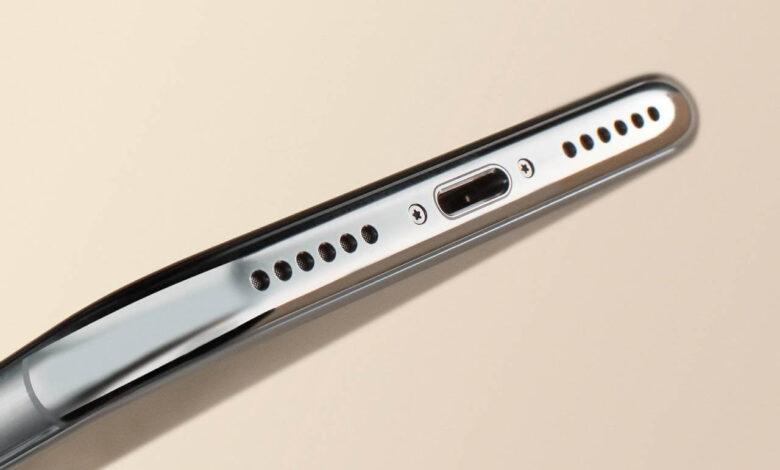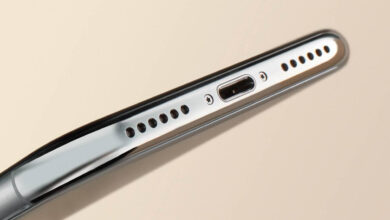How to Fix a Broken Phone Speaker: Quick Repair Tips

When your phone’s speaker starts giving you trouble, it can be a real dampener on your day-to-day routine. Whether it’s a muffled ringtone, distorted sound during calls, or no sound at all, speaker issues can arise from a variety of causes. Luckily, some common speaker problems can be resolved with a few simple troubleshooting steps that you can do at home.
Before taking your phone to a repair shop, it’s worth exploring some quick fixes. These can include adjusting the volume settings, making sure the speaker isn’t covered by a case or debris, and rebooting your phone to clear temporary glitches. Sometimes, a simple restart can be surprisingly effective in resolving audio mishaps.
In cases where a soft reset doesn’t do the trick, further measures might be needed to get your phone speaker back in working order. It’s essential to proceed with caution, as attempting repairs beyond your comfort zone could cause more harm than good to your device. If these initial steps don’t solve the problem, seeking professional assistance may be the next best course of action.
Understanding Your Phone Speaker
When addressing issues with your phone’s speaker, it’s important to know the types of speakers, common problems they face, tools you might need for repair, safety measures, basic troubleshooting steps, how to assess damage, and potential software fixes.
Types of Phone Speakers
Your phone typically contains two types of speakers: the earpiece speaker, which you use during phone calls, and the loudspeaker for media playback and speakerphone functions. Both can experience problems but differ in location and functionality.
Common Speaker Problems
Speaker issues can manifest as distortion, muffled sound, or complete silence. These can arise from physical obstructions, water damage, or software glitches that mismanage the audio output.
Tools Needed for Repair
To attempt a repair, you’ll require a set of precision screwdrivers, a prying tool, and sometimes a suction handle. Ensure you have a clean workspace and small containers to hold screws and parts.
Safety Precautions
Always power off your phone and disconnect the battery if possible before starting repairs. Be mindful of static electricity; using an anti-static wrist strap can help prevent damage.
Initial Troubleshooting
First, confirm the volume isn’t muted or set too low. Also, check if Do Not Disturb is activated, as this feature can prevent sound output.
Assessing the Speaker Damage
Carefully inspect the speaker’s outer grill for debris or damages. If the grill looks clean, the issue may lie internally, which would require careful disassembly to inspect the speaker hardware.
Software Solutions
Perform a system reboot by holding the power button and then selecting restart. If that doesn’t work, check for software updates, as they can remedy compatibility issues that might affect the speaker.
Hardware Solutions
When your phone’s audio quality deteriorates or you’re met with silence, hardware solutions can often rectify the issue. Here are specific steps you can take to address hardware-related speaker problems.
Cleaning the Speaker
Dirt, dust, and debris are common culprits that clog phone speakers and muffle sound. To clean your speaker:
- Use a soft-bristled brush to gently sweep away visible particles from the speaker grill.
- For more stubborn blockages, consider using a can of compressed air, holding it approximately an inch away from the speaker grill and giving it a quick burst.
Realigning the Speaker
Physical impacts may cause the speaker components to shift and not function properly:
- Open the phone case and inspect the speaker unit for any misalignment or loose connections.
- Gently reseat any displaced parts and ensure all connections are secure.
Replacing the Speaker
If cleaning and realignment don’t resolve the issue, you may need to:
- Obtain a suitable replacement speaker for your phone model.
- Follow a step-by-step guide for your specific device to replace the speaker. Remember to work on a flat, stable surface and use the proper tools.
Always ensure that your phone is powered off before attempting any hardware repairs. If you feel uncertain about performing any steps, seek professional assistance. Improper handling may cause further damage to your device.
Preventative Measures
To keep your phone speaker in optimal condition, it’s essential to protect it from damage, maintain cleanliness, and perform regular check-ups.
Protecting Your Speaker
- Avoid Water and Moisture: Always keep your phone away from water and high moisture environments. Even if your phone is water-resistant, prolonged exposure can weaken the speaker’s components.
- Use Protective Cases: Invest in a good-quality case that has a raised bezel to protect the speaker from direct hits and dust accumulation.
Maintaining Your Speaker
- Clean Regularly: Use a soft, dry brush to gently remove any dust or debris from the speaker grills.
- Moderate Volume: Avoid blasting music or sound at maximum volume. Extended exposure to high volume can degrade your speaker’s quality over time.
Regular Check-Ups
- Software Updates: Ensure your phone is running the latest software, as updates can fix bugs that may affect speaker performance.
- Functional Tests: Periodically check your speaker’s sound quality. There are apps available that can help you test the functionality of your speaker.
Seeking Professional Help
When your phone speaker is muffled or not functioning correctly, and you’ve tried all the basic troubleshooting steps without success, it’s time to consider professional repair services.
When to Seek Help
- Persistent Muffling or Distortion: If your phone’s audio remains poor despite your efforts, it could indicate a deeper issue.
- Silent Speaker: When there’s no sound at all, a professional can diagnose whether it’s a hardware or software problem.
Choosing a Repair Service
- Research: Look for reputable technicians with good reviews and ratings.
- Specialization: Ensure they have experience specifically with phone speakers.
Understanding Repair Costs
-
Diagnosis Fee: Some shops charge to inspect your phone, while others offer free diagnostics if you proceed with the repair.
-
Repair Estimates:
Service Type Estimated Cost Range Cleaning $20 – $40 Part Replacement $30 – $100+ -
Warranty: Check if you will receive a warranty on the repair for added peace of mind.
Post-Repair Tips
- Testing: Ensure your phone speaker works correctly before leaving the store.
- Maintenance Advice: Ask the technician how to prevent future speaker issues.
DIY Repair Tips
When your phone speaker stops working properly, don’t panic. There are several DIY repair tips you can try at home to fix the issue before heading to a professional.
Online Resources
To begin fixing your phone speaker, look for a reliable step-by-step guide that matches your phone model. Websites like iFixit and YouTube channels specialized in tech repairs can be invaluable sources of detailed walkthroughs and tutorials.
Learning Basic Repairs
Start with basic repairs that don’t require you to open your device. For example:
- Clean the speaker grill gently with a soft brush to remove any debris.
- Adjust your sound settings to ensure they aren’t causing the issue.
Troubleshooting Steps
Follow these troubleshooting steps methodically to identify the problem:
- Check if Do Not Disturb mode is activated.
- Toggle Bluetooth on and off to ensure the sound isn’t being routed elsewhere.
- Restart your phone to resolve any temporary software glitches.
Testing After Repair
After any repair attempt, test your speaker:
- Play different types of audio to check for consistent sound quality.
- Use the built-in sound testing features in your phone’s settings, if available.
Conclusion
When dealing with a broken phone speaker, your approach should always begin with the simplest solutions before considering professional repair or replacement. Here’s a brief summary of what you can do:
- Keep it Clean: Ensure the speaker grille is free from dust and dirt using tools like a soft brush or compressed air.
- Dry Out Moisture: If your phone has been in contact with water, absorb the moisture with a bag of uncooked rice overnight.
If these steps don’t resolve the issue:
- Check the Software: Ensure your phone’s software is up to date and that the speaker issue isn’t due to a setting or app.
- Temporary Fixes: Some users suggest tapping the speaker area gently, but be cautious with this to avoid further damage.
If you’ve tried these methods without success:
- Expert Consultation: Consider professional repair or replacement, especially if the problem might be due to a hardware fault like a broken cable flex in the case of an iPhone, as suggested in the results. Remember, tampering too much on your own could void warranties or lead to more complicated issues.
Remember, the phone’s speaker is delicate, and while frustration with malfunctioning hardware is understandable, patience and careful analysis are crucial in dealing with these little troubles. Whether you fix it yourself or seek an expert’s help, maintaining a gentle hand is key to a smoother resolution.
Frequently Asked Questions
If you’re facing issues with your phone speaker, you’ve come to the right place. Below are some common questions and straightforward solutions to help you troubleshoot and possibly fix your phone speaker problems.
How can I repair water damage to my phone speaker?
If your phone speaker has suffered water damage, immediately power down your device and remove the battery if possible. Leave it in a dry place, or use silica gel packets to absorb the moisture. Do not use a hairdryer as it may push moisture deeper into the device. After drying, check the sound quality to see if the issue persists.
What are the steps to fix a speaker crackling on my phone?
Crackling from your phone’s speaker can often be resolved by checking for software updates and clearing any obstructions from the speaker grill. If crackling continues, try resetting your phone settings. Persistent crackling may indicate hardware damage, which may require professional repair.
Is it possible to repair a phone speaker that isn’t working during calls?
Ensure the volume is turned up and not muted during calls. Clean the speaker grill carefully with a soft brush to remove any debris. If the issue remains, reboot your device. For software issues, check for updates. Hardware issues may need professional attention.
What should I do if I suspect my phone speaker is blown?
If you’re experiencing distorted sound and suspect a blown speaker, stop using the speaker immediately to prevent further damage. Test the speaker with different apps and audio files to confirm the issue. If it’s confirmed, a professional repair service is likely necessary as the speaker may need replacing.
How can I fix a broken phone speaker with tools available at home?
Common household fixes include using a soft-bristled brush to clean the speaker grill and checking the settings to ensure the speaker isn’t disabled. For minor issues, a soft reset or factory reset might resolve the problem. However, for internal damage, home tools may not suffice, and you might risk further damage.
Are there ways to fix a broken phone speaker from specific brands like Samsung?
For brand-specific issues like with Samsung phones, visit the brand’s official support page for troubleshooting guides. Furthermore, dialing diagnostic codes (like #0# for Samsung) can help you run a sound test. If these solutions don’t work, contact the brand’s customer service or take your phone to an authorized service center.
